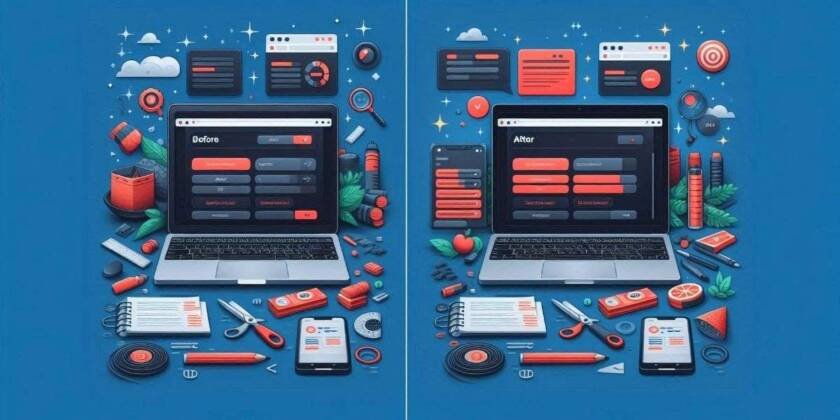What is a Shopify Success Blueprint? As a team of e-commerce strategists, Shopify developers, UX/UI designers, content writers, brand builders, and social media marketers, we’ve seen it all — the good, the bad, and the “why-is-this-even-live?” kind of Shopify stores.
A Shopify store’s success is not just about looking good — it’s about creating a smooth, engaging, and trust-building shopping experience from the first click to checkout.
Sadly, too many stores lose customers not because their products are bad, but because their user experience (UX) is silently killing sales. The good news? Most of these mistakes are fixable with the right approach.
The Shopify Success Blueprint: 3 Essential Pillars

A winning Shopify store stands on three equally important pillars which is the Shopify Success Blueprint:
-
Technical Foundation (Web Developer/Analyst)
-
Fast loading speed
-
Bug-free operation
-
Mobile-first optimization
-
-
User Experience (UX/UI Designer)
-
Simple navigation
-
Clear product discovery
-
Frictionless checkout
-
-
Content & Brand (Content Strategist/Copywriter & Digital Marketer)
-
A strong, authentic brand voice
-
Compelling product descriptions
-
Trust-building visuals and messages
-
If even one pillar is weak, the whole Shopify success story fails.
9 UX & Content Mistakes That Kill Shopify Sales (And How to Fix Them)

1. Confusing Navigation & Discovery
Mistake: Cluttered menus, no filters, weak search bar.
Why It Hurts: Customers leave if they can’t find what they want in 10 seconds.
Example: A skincare store had products buried under random categories like “Glow” and “Magic.” Sales jumped 25% when they switched to clear labels: “Cleansers,” “Moisturizers,” “Serums.”
Fix:
-
Simplify the main menu.
-
Use mega menus for large inventories.
-
Add filters (price, size, color, category).
-
Make your search bar predictive and fast.
2. Ineffective Product Pages
Mistake: Poor photos, minimal details, no reviews.
Why It Hurts: Shoppers can’t physically touch the product, so they need visual proof and trust signals.
Example: One fashion store went from pixelated images to high-res shots with lifestyle backgrounds — conversion rate improved by 18%.
Fix:
-
Use high-res images from multiple angles.
-
Write benefit-driven descriptions (not just features).
-
Include reviews, star ratings, and a visible “Add to Cart.”
3. Lack of Mobile Optimization
Mistake: Slow load times, tiny buttons, broken layouts.
Why It Hurts: Over 70% of e-commerce traffic comes from mobile.
Fix:
-
Design mobile-first.
-
Use large, tappable buttons.
-
Keep checkout short and mobile-friendly.
-
Compress images for speed.
4. Weak Calls to Action (CTAs)
Mistake: Vague “Click Here” or hidden CTAs.
Why It Hurts: Customers don’t know what to do next.
Fix:
-
Use specific CTAs: “Add to Cart,” “Shop Now,” “Get My Free Sample.”
-
Make CTAs stand out with contrast and placement.
5. Trust and Credibility Gaps
Mistake: No “About Us,” no contact info, no security badges.
Why It Hurts: Online shoppers fear scams.
Example: A small jewelry brand added an “About” video and live chat — bounce rates dropped 15%.
Fix:
-
Share your brand story.
-
Display contact info prominently.
-
Show verified reviews and security badges.
6. Complicated Checkout Process
Mistake: Forcing account creation, unclear shipping fees.
Why It Hurts: Cart abandonment skyrockets.
Fix:
-
Offer guest checkout.
-
Show shipping costs upfront.
-
Use a progress bar.
7. No Cross-Selling or Upselling
Mistake: No related products shown.
Why It Hurts: Missed chance to increase order value.
Fix:
-
Use “Frequently Bought Together” sections.
-
Offer upgrades or bundles.
8. Ineffective SEO Strategy
Mistake: Generic titles, slow site, no keywords.
Why It Hurts: Nobody finds your store organically.
Fix:
-
Research relevant keywords.
-
Optimize titles, meta descriptions, and alt text.
-
Keep your site fast and mobile-friendly.
9. Lack of Compelling Storytelling
Mistake: Just products, no brand personality.
Why It Hurts: No emotional connection = low loyalty.
Fix:
-
Tell your brand story.
-
Use it consistently across your site.
-
Let your values and mission shine through.
FAQ: Shopify UX & Sales
How fast should my Shopify store load?
A: Under 3 seconds — anything slower risks losing customers.
Should I invest in professional product photography?
A: Yes, high-quality images directly impact trust and conversions.
Can I fix UX issues without a redesign?
A: Absolutely — small changes like better CTAs, improved navigation, and faster load times can make a big difference.
Need a Sales-Ready Shopify Store?
Your Shopify store deserves more than “just good enough.”
Get in touch with IxD Hub — we’ll build or revamp your store so it’s fast, beautiful, and profitable.Contact us via:




